#dave mackay
Video
2023-3-25-000828-3396-Brands Hatch--66261 by Barry Doolan
15 notes
·
View notes
Text
Driving Stupid (2009) / Traffic (1970)
youtube
#animals & men#driving stupid#susan wells#ralph mitchard#dave mackay#geoff norcott#punk#punk rock#self titled#12'' ep#2009#jacques tati#traffic#cinema#cinema francese#cinema français#french cinema#1970#Youtube
3 notes
·
View notes
Text
3rd Colin Copperfield - speechless at Pete Townsend’s staging of “Tommy”
3rd Colin Copperfield – speechless at Pete Townsend’s staging of “Tommy”
In the last couple of blogs, I’ve chatted to Colin Copperfield about what happened backstage on Jesus Christ Superstar and about his East End upbringing – his sizzling showbiz autobiography It Don’t Mean a Thing if it Ain’t Got That Zing! is on sale now.
Over the years, he appeared in over 900 TV shows in 26 countries. He appeared in three Royal Command Performances and on five albums and…
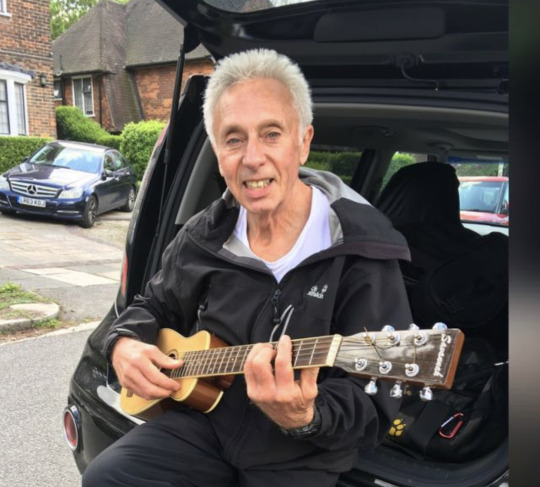
View On WordPress
#book piracy#book royalties#Colin Copperfield#Colin Satchell#Dave Mackay#Flowers For Algernon#It Don’t Mean a Thing if it Ain’t Got That Zing!#musical#Norman Punt#Paradise Lane#Pete Townshend#Steve Devereaux#The Who#Tommy#TV variety#Wall Street Crash
0 notes
Text

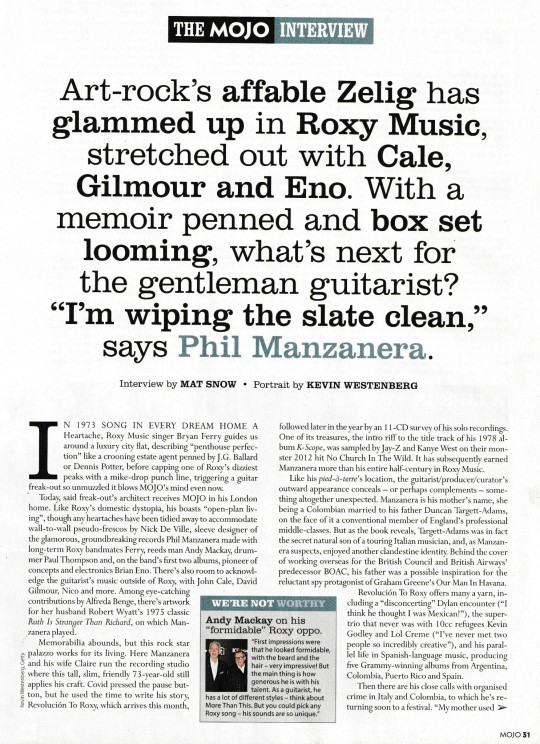
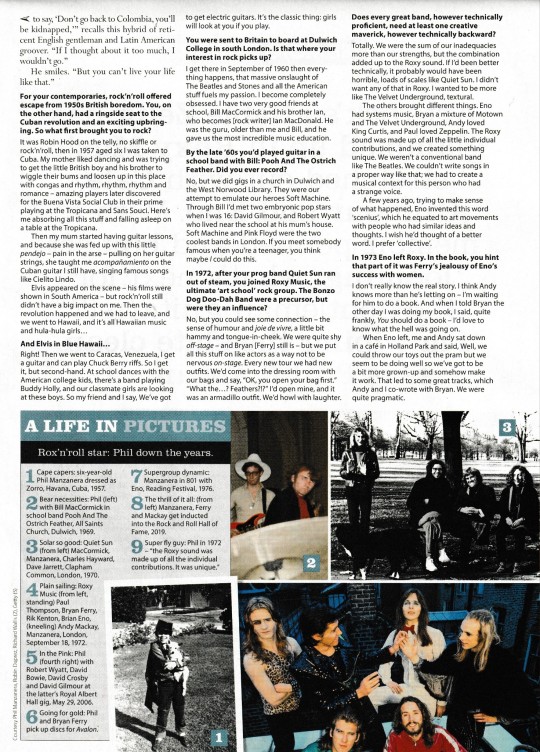



#mojo#mojo magazine#phil manzanera#andy mackay#bill maccormick#charles hayward#dave jarrett#clapham common#paul thompson#bryan ferry#rik kenton#brian eno#robert wyatt#david bowie#david crosby#david gilmour
9 notes
·
View notes
Text
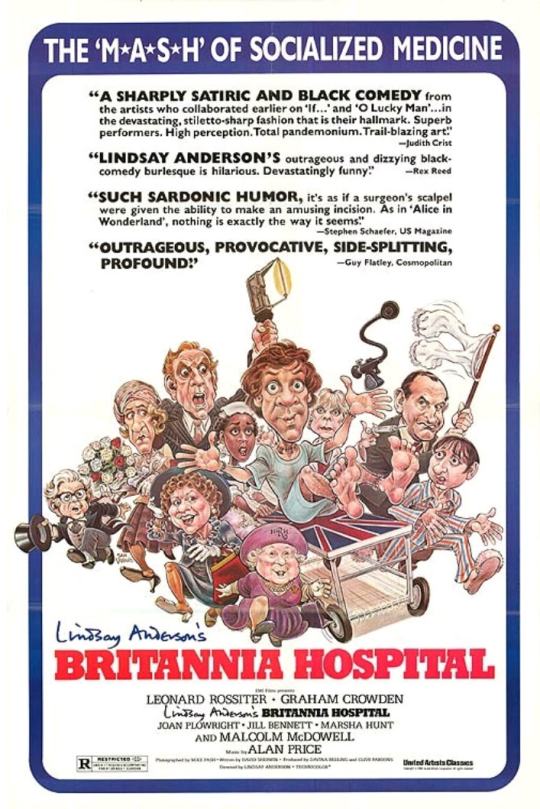



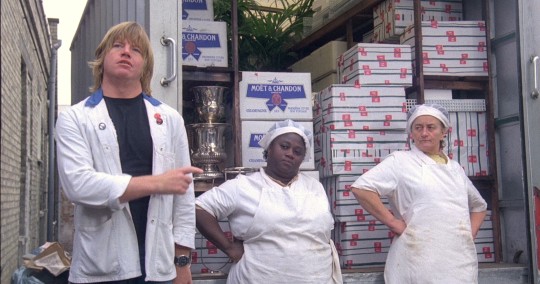


Britannia Hospital (1982) Lindsay Anderson
July 2nd 2023
#britannia hospital#1982#lindsay anderson#graham crowden#leonard rossiter#malcolm mcdowell#brian pettifer#joan plowright#jill bennett#robin askwith#mark hamill#marsha a. hunt#marsha hunt#richard griffiths#john moffatt#fulton mackay#peter jeffrey#dave atkins#catherine willmer#frank grimes#marcus powell#john bett#gladys crosbie#rufus collins#robbie coltrane#brian glover#mike grady#liz smith#alan bates#arthur lowe
8 notes
·
View notes
Text
Steve Blimkie and The Reason (1979)
First things first — I chose this album as my first review because I totally adore this guy. That being said, I seem to be the only person out there to take an interest in him! I can’t even begin to tell you how difficult it is to dig up information, but after lots of dedication, I can give you a somewhat solid biography. So, who is Steve Blimkie?

Blimkie was part of the so-called second wave of the Toronto punk scene. Edging on new wave and power pop, him and his group The Reason stood out from the rest. That is mostly due to Blimkie’s sheer energy, as stated in concert reviews I managed to find, and quite clearly here. Is it any wonder that this spunky guy originates from the radioactive village of Chalk River, Ontario? During this point of his career, he released two albums, this self titled one, and another called Chasing Paper Tigers, which we’ll talk about another time.
This album was released on Ready Records in 1979, and was one of, if not the first, albums released under that label. Interestingly enough, both Blimkie albums were advertised on the inner sleeves of many of Ready Records’ bigger releases like the Spoons and Blue Peter, all the way until the labels demise in 1985. I find it odd that he never gained more recognition! It should also be noted that The Reason contained some familiar faces, including Dave Betts, and eventually Derry Grehan who would both go on to form Honeymoon Suite.
Blimkie's vocals have a very recognizable flamboyancy to them; dramatic, but not in a way that gets annoying. For me, the standout tracks on this album are It Only Happened Twice, Can’t Say I’m Sorry, and most certainly the upbeat Subway. I really appreciate the track order of this album, I feel like the slower songs are spread out in a way that keeps it exciting. This is a record you can put on and dance!
Unfortunately, but unsurprisingly, this album is widely unavailable and is only for sale second hand. Even then, it’s a difficult one to track down if you don’t want to spend lots on Discogs. I’ve ripped and uploaded the entire album here for your listening pleasure:
youtube
#steve blimkie#steve blimkie and the reason#derry grehan#dave betts#kim mitchell#angus mackay#ready records#honeymoon suite#1970s#70s#punk#70s punk#new wave#power pop#music review#album review#obscure music#Youtube#toronto punk#chalk river
6 notes
·
View notes
Text
Ibelisse Guardia Ferragutti & Frank Rosaly Interview: Knowledge and Dignity

Photo by GUMO
BY JORDAN MAINZER
When I log on Zoom to interview creative and life partners Ibelisse Guardia Ferragutti and Frank Rosaly, I expect to see them together. Instead, Ferragutti's at their home in Amsterdam, and Rosaly's camera is set up somewhere outside, but he's not there at all. (The Zoom active speaker view keeps on highlighting him because birds are chirping.) As I introduce myself to Ferragutti, Rosaly eventually shows up, and they explain to me that he's at a house in the forest they share with friends. The contrast between the two locations--personal and internal, earthbound and communal--fittingly mirrors the dichotomy of what I'm there to ask them about, the stunning MESTIZX (International Anthem/Nonesuch). Ferragutti and Rosaly's new album represents the first time either artist publicly confronted aspects of their Latin heritage. It's also their first record at all. Even Rosaly, the prolific experimental music drummer who has played with everyone from indie rock lore like Thurston Moore and Ryley Walker to jazz stalwarts such as Dave Rempis and Matana Roberts, has never made anything that sounds quite like MESTIZX, and only ¡Todos de Pie!, his project exploring the music of Puerto Rico through improvisation, came close to touching the record's layered themes. Nonetheless, Ferragutti and Rosaly have managed to dive deep into complexities while finding a collaborative artistic voice.
The word "mestizx" is a non-gendered word of "mestizo" or "mestiza", the Spanish colonial term for mixed race, an identity the duo owns and turns upside down with MESTIZX. Ferragutti was born in Bolivia and is of Bolivian and Brazilian heritage, countries colonized by Spain and Portugal, respectively. The majority of the modern Bolivian population identifies as "mestizo," a mix of Indigenous and European heritage, of the colonizer and the colonized. It's this in-betweenness that Ferragutti wished to dissect on MESTIZX, a feeling beyond simply growing up with the music of the Bolivian and Brazilian diaspora. Rosaly, meanwhile, is of Puerto Rican heritage but wasn't allowed to speak Spanish outside of his home during childhood, as his parents wished to assimilate him as much as possible to the English-speaking United States. Before he became the dynamic, noisy drummer he was today, he fell in love with percussion and first connected with his roots when watching another drummer of Puerto Rican heritage perform, the late, great Tito Puente. The sounds on MESTIZX touch on all of these musical traditions and more, intensely reflective.

Photo by GUMO
Yet, Ferragutti and Rosaly's approach is also immaculately researched and respectful. Both artists went to school for music; though the songs on MESTIZX are anything but traditional, they reflect Ferragutti and Rosaly's deliberately academic exploration of music-making. They took the time to understand the ritualistic and cosmological context of each included instrument and rhythm before connecting it with modern-day ideas of decolonization and protest via Ferragutti's lyrics. That is, whether it's the impossibly wide array of percussion instruments from all over the world or Ferragutti's synthesizers effected to sound like pan flutes, everything on MESTIZX is included for a reason. "I didn't go thinking on this record, 'I want to use African instruments.'" Rosaly said. "When we were first starting to play around with instruments in the living room and hanging out, the mbira was around, and I came up with this little harmonic sequence, and things started landing on top of that instrument. I had to ask myself, 'I love the sound, of course, but am I using it for reasons that are dignified for the instrument and its lineage without appropriating?" Rosaly studied the way in which the African diaspora was embedded in Puerto Rico. "That musical and spiritual ideology traveled," he said. "Suddenly, the mbira had a place for me."
As much as MESTIZX sounds on paper like an ethnomusicologist's favorite new album--just take a look at the album's immersive liner notes--Ferragutti and Rosaly emphasized to me that the actual qualities of the songs are exemplary of the two's past musical influences and contemporary artistic community. Rosaly's history in the Chicago post-rock and jazz scene shines through, making a song like the album's title track, full of wiry guitars, an orchestra of synthesizers, and Ferragutti's captivating vocals, earn its pitched-to-me would-be-ridiculous descriptor of "Elza Soares fronting Hail To The Thief-era Radiohead." Moreover, on each song, the two solicited contributions from a who's who of contemporary experimental musicians, from bassist Matt Lux and cornetist Ben LaMar Gay to guitarist Bill MacKay and multi-instrumentalist Rob Frye. It's a testament to the collective's creativity how natural, often groovy, and cohesive the songs sound, despite each's long list of players, many of whom play multiple instruments per tune. On lead single "DESTEJER", Ferragutti differentiates between being intertwined with her roots and being suffocated by them, singing, translated from Spanish, "The present conjures the past that informs the future / I dodge the trap / I am not raw material." Her words form a push-pull with the clattering percussion, courtesy of Rosaly and Mikel Patrick Avery's tambourine and caxixi, and the woodwinds that alternate between flutters and smooth expressions, demonstrating the tension within.
Ultimately, the next step for Ferragutti and Rosaly is where the songs on MESTIZX go from here. Right now, they're exploring them in a live setting, on tour in Europe with Lux, Gay, multi-instrumentalist Ben Boye, and pianist Marta Warelis. Before embarking on tour, the two rehearsed simplified versions of the songs themselves, but just like the record, the songs will become fully fleshed only when the duo invites their friends on stage to help them along the way, participating in the modern-day ritual of playing music, a full circle return to the rituals Ferraguti and Rosaly studied to prepare to make the album. "The medium of the record is one thing, and songs need to be certain lengths for them to stay buoyant," Rosaly said. "Having a whole family of magical people we can tour with in different contexts, the music is going to open up in very unforeseen ways."
Below, read my conversation with Ferragutti and Rosaly, edited for length and clarity. We talk about MESTIZX, the album's art and videos, roots, colonialism, and Chicago post-rock.

Since I Left You: Reading about the ideas and story behind MESTIZX, it's clear the issues of identity it deals with are things the two of you have been grappling with for a long time. Why was right now the time you decided to sit down and make this album?
Ibelisse Guardia Ferragutti: In my case, it's been something I've been dealing with my whole life. I've felt a super loud presence of my roots and realized not everybody where I come from had that. It was almost a burden, a curse. [laughs] But also totally not and really beautiful. It had a big influence in a good way and sometimes in not such a nice way, to the point I had to do something with it. I didn't know exactly what ["it"] was, so I let it go, but the moment I really faced ["it"] through music, I allowed for a lot of healing in terms of my relationship to my roots, the painful parts of my roots, and the beautiful parts of my roots. I also [have] a lot of connection with people, rhythms, and the pain of what it is to come from places so deeply colonized.
I just read an article that somebody wrote in Germany [about MESTIZX], and they called it a bit of a self-help record. [laughs] I don't know, I think it's more than that for me. It's not just about me. It's about something we share as a collective intelligence, where we're at in this moment, in the South American diaspora.
Frank Rosaly: [Self-help] sounds like a bit of a simplification of the context of the record. I started thinking about this stuff around 2006. I had a pretty disconnected relationship with Puerto Rico, by design. My parents kept me as integrated as possible to my benefit. I don't necessarily identify as being Puerto Rican outright. When Ibelisse and I met and began our partnership, being in partnership with a Latina really opened a dialog that was never really so open in my life. That's when things really shifted into high gear in dealing with some of the themes you hear about on this record.
SILY: What about during the process of writing or recording or playing with others? Did your relationship to your roots change?
FR: For me, it deepened things. Since Ibelisse is the guardian of the lyrics, and I'm oversimplifying things here, but I'm creating content from the musical side of things--we're both doing that of course--the rhythms that come from certain regions and all of my research, studies, and interest in that material had a place. Before that, playing with Ryley Walker, it didn't make sense to throw some bomba in there. All of a sudden, this incredible amount of something from within became dislodged and able to move through me and the music, that I hadn't given a lot of space for. I've only been in one project that I created myself, ¡Todos de Pie!, that began to talk about this and research this a bit. This project really set it all free, and it became a waterfall.
IGF: For me, I think it was a really beautiful and intense process, to confront my own biases. I studied classical piano, have done a lot of punk music, and realized in my education, by default, even growing up in South America, I wasn't in contact with the music of the territory, with the real roots. The process of this music was so deep that I started talking with a lot of people and doing a lot of research about how much by design you are already given this very Western idea of listening to, making, and belonging to music. I felt so sad that in my country, we never had enough power to appreciate what we already had there. It's stunning, the most beautiful drum music I've ever heard. It sounds self-helpy, but it's not: It was a big healing process of reconnecting with deeper layers of instruments that belong to a territory. Pan flute, I just see it in the main squares, people playing it in the street, but it's actually a very powerful instrument when put in its right context for its right ritual and purpose. For me, it was a really big journey to go really deep and really dare to listen to things I couldn't listen to before. Even if I don't use the pan flutes, to have a reverence for where my ancestors come from and have a space to listen. The magic embedded in those rituals is out of this world. It's like they're people from the stars. I can't explain the whole thing--it's like a whole book--but I was so stunned by the cosmologies of the people from those territories. This record brought me there, and I'm very, very thankful for that.
SILY: Your average music listener might not think about the fact that an instrument, rhythm, or sound can have its own proper sociohistorical context independent of the sheer quality of how it sounds. Were you hoping to further educate listeners with this record?
FR: I wouldn't go as far as to say "educate." At the end of "BARRO", there's panderetas being played, and it's not some sort of reference or a shoutout, as in, "Here's a little Puerto Rican tidbit." It really has a place in the song because of what the song is talking about and what we're trying to invoke. I found it imperative; there's an urgency for that to happen. When we started making the record, we weren't trying to make a Latin-feeling record--we both tend to make pretty noisy, experimental stuff--but because of the content of the record and what's really happening inside of the music, it informed us to make a different decision as to how the music can be carried by song, flow from song to song, to make a record and an entire story. I've never thought this deeply about all the connective tissue and the meaning of everything on this record. Nothing is put in place, like, "A shaker would be nice!" A shaker is there because it really needs to be there, not just on a musical level, but because of the message.
IGF: I feel like I am a bit more educated; I'm going to start by educating myself. I can communicate to other people. I don't feel like I'm allowed to play a pan flute or anything like that. I know much more now than what I knew before, but that knowledge and dignity I felt making the record is embedded in the music by default, by the way I talk about things, choose this word or that sound. It has to do with a repercussion of understanding the dignity of those instruments in the territories they are made and played: agricultural reasons, cosmological reasons. That knowledge is so inspiring, it helped me decide how to make this record. The record is a reflection of what I learned.
SILY: What determined what language each song was in?
IGF: I think it had to do with the sound. We built "MESTIZX" like a singer-songwriter [song,] and it just came out in Spanish, naturally. Some songs started from the lyrics towards the instrument, others from the drums towards words. At a certain point--and with the help of Frank--I was listening so openly, the song would tell you what language it needed to be sung in. “SABER DO MAR”, the second song of side B, is often translated in the reviews as "Know the Sea", but it's actually "The Knowledge of the Sea". I was thinking that all of these people came from the Africas to Brazil and informed so much music and brought their instruments, gods, and belief systems. I was really inspired by the language carried in that diaspora between Africa and Brazil, which is the colonizer language, which is Portuguese. The sea brought all of these languages to Brazil, and to Bolivia. The last two [songs] in English...I think it has something to do with this "mestizx" thing. I communicate nowadays in English rather than in Spanish or Portuguese. I didn't grow up with it, but I use it so much it's embedded in how I think, how I feel, how I communicate with my love, Frankie. We just communicate in English. Frankie doesn't understand Spanish or Portuguese, so English is our bridge. English is a powerful medium for this record, in terms of all of the voices that live within us.
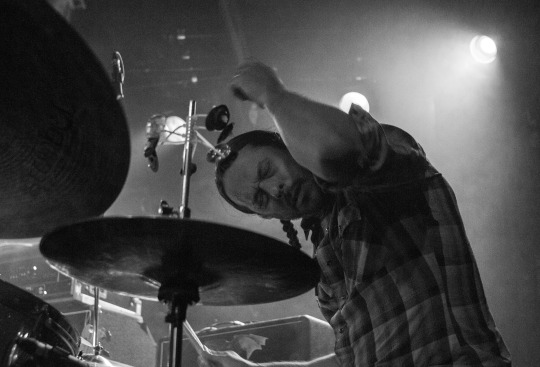
Photo by Saskia Ludden
SILY: Frank, in terms of music where you come from, how would you say Chicago post-rock informed this record?
FR: I would argue that the fabric of how I think about playing is woven almost strictly from my experiences in Chicago and the music that brought me there in the first place, which dislodged me from a weird path of institutional jazz learning and going to school. I heard Sam Prekop's first solo record with Chad Taylor and Joshua Abrams, then I heard Isotope 217, then Tortoise. I was in Arizona at the time, then I moved to L.A. for a while. I was really in a bubble before that. Suddenly, everything changed because of that sound. It's not any particular artist. They've all influenced me in so many ways. Not necessarily, "I'm going to play like Dan Bitney now because I love that sound," but the principal of how Dan Bitney fits in Tortoise, and how John Herndon sounds in Isotope, and the melodies that Rob Mazurek makes. [Mazurek] plays a lot of intervals in 4ths, which I fell in love with when I was in college composing, but then I was exposed to it in a new context which made me crazy. You hear 4ths everywhere in this record, which is because of Charles Ives by way of Rob Mazurek by way of Gastr del Sol and the free jazz and improvisational lineage from Chicago, from the Art Ensemble of Chicago to what's happening even now. It's all in there.
SILY: From a broad perspective, there seems to be a contrast in textures and moods in every song. Was that a goal, to have tactile instrumentation going on at the same time as something broad and expansive?
IGF: From my point of view, I don't know if it was a strategy as much as my listening inside the moment, which is of course a strategy. [laughs] For me, playing with synthesizers is a really nice way to speculate folkloric instruments. I would tune the synthesizer in different ways to make it have the same tuning as a pan flute. The electricity of the synthesizer had to be there because it's a medium that makes a lot of sense to tie the ancestral with the futuristic, to break through space and time. I was also thinking about whether I should sing or use words because [that way is] less post-rocky--I'm also super inspired by post-rock [laughs]--there was something bigger happening in terms of the palette of the sounds. My voice became a kind of instrument, so to say.
FR: I would argue another part of how I think about things has so much to do with that old version of myself when I was in school, learning about classical percussion and the percussion family. It's such an incredibly huge family of instruments that span across the world. They're all a part of my life, because I've studied them and they mean something to me. If I [use] a pandeiro from Brazil, it's not necessarily just because Ibelisse is speaking in Portuguese, or because it has anything to do with Brazil, but because it's the right sound.
SILY: Did you have specific people in mind you wanted to play on certain songs on the record?
FR: The first person we were thinking about was Matt Lux, because of his sound. I had worked with him on another project where he was the producer. The way he thinks about sound and very gently produces--he just says a few things and lets it sink in--he has a way of being very subtle about helping artists like Ibelisse and I move deeper into the music. We just wanted him around and then said, "Dude, you gotta bring your bass and play a little bit." He had always joked about being in retirement. Luckily, that's not the case. The last time I was in Chicago, I was supposed to do a recording session with Rob Frye and Ben LaMar Gay, and I got really ill. I really love their sound, [so I asked them]. Bill MacKay, I love that guy so much, he's been such a huge inspiration as a human being, let alone a musician, so we wanted to see whether he could arrive and play a few notes.
IGF: We also had some songs with guitar and thought his sound was really unbelievable. Avreeayl Ra is really amazing. Mikel Patrick Avery. There are so many.
SILY: Bill got to play requinto on "SABER DO MAR". I don't think I've heard him play that instrument on record since his album with Ryley Walker years ago.
FR: It's a beautiful sound. He really understood the depth of the music. He speaks Spanish and Portuguese really well.
IGF: We were at Into the Great Wide Open with Ryley, and Bill was there, and he started talking to me in Spanish and Portuguese!
FR: I would be remiss not to mention Chris Doyle, who lives in Amsterdam. He used to be in Antibalas and was in the scene in New York City, roommates with Jaimie Branch for a long time. We are dear friends and play in a few different projects together. He swooped in at the last minute and added some layers that only he could manage, because he's such an incredible musician and really subtle thinker. I would argue he's a producer in the way he added the tiniest touches of beauty that opened things up a little bit more, gave them more air, even though he was adding layers. Mikel Patrick Avery was visiting Amsterdam, and I just asked him to do a couple overdubs because of his feel and sound. He'll just take a toy tambourine and do something smooth as butter, even though that sounds corny.
IGF: There was a community aspect. [Avery] came to visit when we were at International Anthem, and we said, "Don't you want to play some congas or something?" [laughs] It worked out super well. The community aspect is similar to [that] where I come from.
FR: These are all people we're deeply in love with. We wanted that to be embedded in the music, that it's really coming from a place of love and sharing ideas together from a loving place.
SILY: Can you tell me about the history of the voice memo included on "BLESS THEE MUNDANE"?
IGF: Viktor [Le Givens]. [laughs]
RF: I didn't know him very well when I lived in Chicago, but there was a series that I ran at the Skylark in Pilsen for about 8 years with Nick Mazzarella and Anton Hatwich. It originally started with me and Jaimie Branch, but then she moved away. Viktor would come to some shows occasionally. I think he was going to Columbia at the time. He's been this character that orbits my consciousness often. Suddenly, I hear that Ibelisse is this festival in The Hague, and she sees this magical guy doing this thing with Angel Bat Dawid. I was like, "I know this guy!" I started following him on Instagram. This work he does is incredible. It's this beautiful archive of The Great Migration. It's stunning, the way he talks and thinks and presents. I kind of have a little bit of a man crush on him. I started sending him messages about his posts and watching his live feeds religiously for a while. We started exchanging voice messages, and I was telling him while Ibelisse and I were in the midst of making a record, we were busy with really small minor details, really mundane stuff, and he sent this message. It was like, "Uhh...right. Only Viktor could [take] something I was really struggling with and give it life and context." It was super inspiring for me, so I asked him if it was okay to use the voice memo for that conversation.
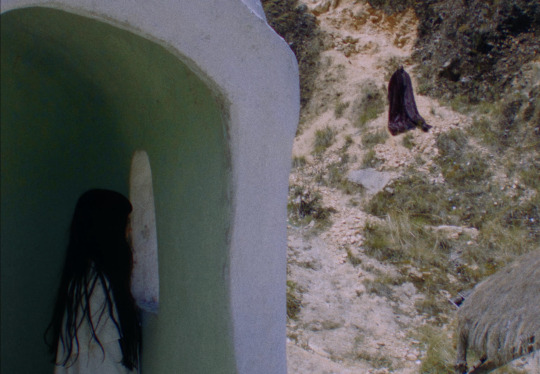
SILY: How involved were you in the visual identity of the record?
FR: The record cover, I kind of designed it.
IGF: [laughs]
FR: I didn't take the photo or anything like that, but I used Pages to design the [linework.] That came together pretty quickly based on something I drew up.
IGF: We were in Bolivia when we did [the album photos.] We wanted to have a couple amazing friends, photographers and visual artists--and I really wanted to have South American artists--involved in the images. A friend of mine took the pictures, and we went to a very beautiful mountain where I grew up, and to the market, these very crazy places in Bolivia. We did make a mood-board to guide our friend of how it could be, more or less. Not in all of the pictures, but in the cover picture, he really captured something we were longing for. It's full of the world around you, the territories that were talking to us so loudly. For the [video] for "DESTEJER", I asked someone in Bolivia who I didn't know but who I had been following for a while, [Espectador Domesticado]. The concept behind the concept, in Cochabamba, the lake, was, "How does the new generation perceive this music?" We talk all the time about ancestors and the past, but I also want to think about the future. These are ancestors of the future, 23 years old. So we did develop a little bit together, but I gave [the director] a lot of freedom to interpret the territory the way he wanted. We did help him with edits, but I left as much space as possible for his voice.
FR: For "TURBULÊNCIA", we were thinking, "We need to put out another single. Should we make a video? Should we?" Ibelisse and I are part of a collective called Molk Factory, and one of our collective members who is a wonderful video artist who works with projection and light, we asked her whether she wanted to make a video with us real quick. We added some ideas between all of us and came up with the idea of using very open space with movers and dancers. We wanted to deal with the dissonance of what the song is talking about. We wanted to tear apart or unweave, if I can use that word--
IGF: Destejer. [laughs]
FR: Destejer. We very quickly put the task at hand. "Let's mix this video." We filmed it in about 10-12 hours with the help of Marc Riordan, who used to live in Chicago. Incredible drummer, incredible pianist, and now he's really busy with a film living in L.A. He was visiting to play some shows with me and was the main camera operator, which is such a blessing because he's really good at thinking about cameras and how all of that works, because I have no idea. Within a 24-hour period of actual time, that video was formed. It was playful, immediate. We didn't think about too hard. It just came out. We were really happy with it.
IGF: The tricky part is it had digital post-production. When does digital [manipulation] become a response to what we were saying, not just a trick, but serve something more than a trick or a gimmick? It was a bit of a conversation with [director] Noralie [van den Eijnde], because it's called "TURBULÊNCIA", or "turbulence," with things out of control sometimes. How do we listen, and how do we use our hands to carve a new knowing together? Who is giving me the voice, and is that why the hands are moving my face? Is that the ancestors? This counterpoint between who is moving who: Is something moving the body, or is the body open enough to be losing its shape?
SILY: It's the colonizer versus the colonized, external forces affecting our perspective of things versus something more internal.
IGF: I think you're right. At some point, it's taking ownership of these two forces--the duality--and what do you do with it after just being the victim of it. "DESTEJER" was the opposite. We perform, we read the music, and there was this amazing rhythm happening, but we're just looking at the water really quietly. We were totally ADHD and wanting things to happen, but the filmmaker was like, "No! Everything is already happening in the forest, in the lake, in the water." We just had to listen and be there. Both videos are totally different, but in a way, they're totally similar in the essence of making yourself available and take ownership of the things that live within you while dealing with them and their contradictions.
Tour dates:
5/30: de Doelen, Rotterdam, NL
5/31: Tolhuistuin, Amsterdam, NL
6/1: C.A.L.L. F.E.S.T.I.V.A.L., Amsterdam, NL*
6/3: Kampnagel, Hamburg, DE
6/4: 90mil, Berlin, DE
6/6: Stadtgarten, Köln, DE
6/7: Church of Sound, London, UK
6/8: Pabfest, Île de Batz, FR
*Members of the MESTIZX band perform
youtube
#interviews#live picks#ibelisse guardia ferragutti#frank rosaly#gumo#international anthem#nonesuch#ben lamar gay#bill mackay#mikel patrick avery#marta warelis#saskia ludden#chris doyle#marc riordan#noralie van den eijnde#de doelen#tolhuistuin#kampnagel#stadtgarten#church of sound#pabfest#mestizx#international anthem recording company#nonesuch records#thurston moore#ryley walker#dave rempis#matana roberts#¡Todos de Pie!#tito puente
0 notes
Text
The last performance of the original lineup
#The Stooges#Iggy Pop#Ron Asheton#Scott Asheton#Dave Alexander#Steve Mackay#Fun House#Live at Goose Lake#music#fave
0 notes
Text

Tottenham Hotspur’s Double winning team pose for a photo together with their trophies, 1961.
Back row, left to right: Bill Brown, Peter Baker, Ron Henry, Danny Blanchflower, Maurice Norman, Dave Mackay.
Front row, left to right: Cliff Jones, John White, Bobby Smith, Les Allen, Terry Dyson.
Bill Brown: Signed in the summer of ‘59. Proper keeper, is talked about in the same breath as keepers like Clemence, Jennings, and Lloris. Steadfast in this side.
Peter Baker: Born in Hampstead, he played for Enfield before coming to Spurs in ‘52. Played one game short of 300 and scored 3 goals as a right back. Got the job done and never let himself get ruffled by any winger; he’d love watching modern fullbacks nowadays.
Ron Henry: Only ever played for Spurs on the senior level, signing in ‘52. Fast and a good tackler, sound left back. He had a plant nursery and homing pigeons, and he stayed on with Spurs as a coach for the U18s.
Danny Blanchflower: Irresistible, incredible, incomparable. There will never be another like Danny. Signing from Villa in ‘54 and going on to head Northern Ireland, he was the captain of Spurs’ Double winning side and made this great team extraordinary. He had very progressive ideas of how the game should be played, fast and attacking and being allowed to use a ball during training, and was set on the idea that the glory—doing things in style—is what is special about the game. No one like him.
Maurice Norman: Signing in the winter of ‘55, he was an absolute assured and commanding figure at the back. Scored 19 goals over his 400+ appearances for Spurs; should’ve been a mainstay at centre half for England but unfortunately his career was cut short due to a double fracture in his tibia and fibula. Integral to the success of this side.
Dave Mackay: If the word legend had a picture accompanying its definition in the dictionary, surely Mackay’s face would be smiling back up at you. Coming from Hearts in the spring of ‘59, he is still described to this day as possibly the most complete midfield player Scotland has ever produced. He never gave up playing even when the rest of the team believed they had already won. A player who inspired everyone around him, others spoke of him as the ‘hardest man I have ever played against—and certainly the bravest.’ He was known famously as the heartbeat of Bill Nic’s Double winning side. Ange Postecoglou and Son Heungmin would have loved him.
Cliff Jones: Formerly Spurs’ top fifth goalscorer before Sonny overtook him, the Welshman signed for the club in the early spring of ‘58 from Swansea. He was a crucial player in the side who played on both wings, was faster than you could believe, always put a lovely cross in, and scored goals from flying headers. Still has lovely words to say about the club and his grandson, Matt Wells, is currently a first team assistant coach.
John White: Nicknamed ‘The Ghost’ due to his runs to find space off the ball that saw him arrive unexpectedly in the opposition’s penalty box, he was one of the most skilful players to ever don the shirt. Signed in the autumn of ‘59. His name bleeds into Spurs folklore as he was being primed to be the next Blanchflower but tragically passed away prematurely when struck by lightning while playing golf in ‘64. His teammates say about him: ‘While other players were someone you would have to bring into a game, John would bring himself into the game.’
Bobby Smith: For the days of centre forwards like him! Currently Spurs’ third top goalscorer, he joined from Chelsea in the winter of ‘55, clearly having recognised which the superior London club was. Twelve hat tricks over his career with Spurs, he was big and bustling and scored goals like nobody’s business. He scored 33 goals in 43 games in the Double-winning season—not too shabby.
Les Allen: Joining the club in the winter of ‘59, he immediately struck up a brilliant and lethal striking partnership with Smith, scoring 27 goals that Double-winning season. While living in Smith’s shadow a little and struggling to retain his place in the starting XI with the arrival of Jimmy Greaves, he was still an essential part of this side’s success. His son Clive Allen and his nephew Paul Allen both went on to play for Spurs.
Terry Dyson: A player who would nowadays be dismissed by talent scouts due to his height and is often not remembered in this side, but was the catalyst to Spurs’ success that season. He signed for the club in ‘55. A snappy winger who could put in a good cross, he is the only Spurs player to score a hat trick in the North London Derby to date. You can still find him trawling around academy matches.
#tottenham#football#spurs history#click read more for a little more info on each player 🤍🤍🤍#had lots of fun doing this <3#rahul.txt
12 notes
·
View notes
Text

MOON KNIGHT: FIST OF KHONSHU #2
JED MACKAY (W) • ALESSANDRO CAPPUCCIO (A) • Cover by Davide Paratore
MARVEL TWO-IN-ONE VARIANT COVER BY DAVE WACHTER
VARIANT COVER BY FELIPE MASSAFERA • VARIANT COVER BY PAULO SIQUEIRA
WINDOWSHADES VARIANT COVER BY NAO FUJI
THE MIDNIGHT MISSION REUNITED!
After the biggest surprise comic of the summer – MOON KNIGHT: FIST OF KHONSHU #0 – a new era has taken shape in the Midnight Mission! But what NEW threats and foes are waiting for the REBORN Marc Spector?
32 PGS./Rated T+ …$3.99
6 notes
·
View notes
Text
Meet the Competing Voice Actors!
After the preliminaries and days of deliberating, here are you VOICE ACTORS COMPETING! One will take home the spot of Tumblr's Favorite Voice Actor!
A note before they are introduced! If you would like to support any of them send in an ask or make propaganda, any propaganda you make and post yourself should have me tagged! As well using the tags #favevabracket or #favevabracket2023!
And a quick reminder about the two rules that will be staying active!
No harrassment, hate, or vitriol will be tolerated. We are here to celebrate the work of voice actors not tear each other down
This is all for fun! Do not take it super seriously!
Good luck to all of our competitors!
Kirby Morrow
Rob Paulsen
Robbie Daymond
Tiana Camacho
Alex Hirsch
Khoi Dao
Megumi Ogata
Ray Chase
Sungwon Cho
tara strong
Yuri Lowenthal
Alejandro Saab
Billy Kametz
Billy West
bryce papenbrook
Cree Summer
Grey DeLisle-Griffin
Kevin Conroy
Phil Lamar
Zach Aguilar
Zeno Robinson
AJ Michalka
Alex Brightman
Allegra Clark
Ashley Johnson
Christopher R. Sabat
Daws Butler
Eartha Kitt
Erika Harlacher-Stone
Frank Welker
J. Michael Tatum
Jack De Sena
Jason Griffith
JK Simmons
John DiMaggio
June Foray
Kristen Schaal
Mark Hamill
Richard Horvitz
Steve Blum
Tom Kenny
Wendie Malick
Aaron Dismuke
Aaron Paul
Aimee Carrero
Alison Brie
Ami Koshimizu
Angela Bassett
Ashley Ball
ashly burch
Avi Roque
Ayumu Murase
Ben Schwartz, baby!
BETH MAY
bill farmer
Bill Scott
brandon rogers
Caitlin Glass
Casey Kasem
Cassandra Lee Morris
Cecil Baldwin
Christine Cavanaugh
Clark Duke
Colleen Clinkenbeard
Daman Mills
Dan Castellaneta
Dan Provenmire
Dani Chambers
Dante Basco
Dave Fennoy
David Tennant
Deedee Magno Hall
Deven Mack
Doris Grau
Doug Boyd
Dylan Marron
Elizabeth Maxwell
EG Daily
Elijah Wood
Ellen McLain
Eric Vale
Erin Fitzgerald
Josey Montana McCoy
Greg Chun
Gu Jiangshan
Guilherme Briggs (brazilian)
Haley Tju
Harry Shearer
Haruka tomatsu
Helen Gould
Hynden Walch
Jack McBrayer
Jackson Publick
Jaime Lynn Marchi
Jason Griffith
Jason Liebrecht
jason marsden
Jennifer Hale
Jerry Jewell
Jim Cummings
Jim Ward
John Burgmeier
John Swasey
Johnny Yong Bosch
Julie Kavner
Justin Cook
Kaiji Tang
Katey Sagal
Kdin Jenzen
Keith David
Ken Sansom
Kent William
Kevin Brighting
Kevin R Free
Kieran Reagan
Kimberly Brooks
Kimiko glenn
Kyle Igneczi
Kyle McCarley
Laura Bailey
Lauren Tom
Leah Clark
Liam O’Brien
Lorenzo Music
Lucien Dodge
Lucille Bliss
Lydia Mackay
Lydia Nicholas
Maddie Blaustein
Mae Questel
Mae Whitman
Maggie Robertson
Mara Wilson
Mark Oliver
Matthew Mercer
Matthew Zahnzinger
Maurice LaMarche
Max Mittelman
Mel Blanc
Melissa Hutchinson
Michael Adamthwaite
Micheal Sinterniklaas
Mike Judge
Monical rial
Natsuki Hanae
Nicole Tompkins
Olivia Olson
Olivia Wilde
P.M. Seymour
Parker Simmons
Patricia Ja Lee
Patrick Pedraza
Paul Castro Jr
Paul Frees
Penny Parker
Pete Gustin ( i think thats how it's spelled)
Peter Cullen
Phil Harris
Phil Hartman
Ricco Fajardo
Roger Craig Smith
Roz Ryan
Sandra Oh
Sarah Miller-Crews
Sayaka Ohara
Scatman Crothers
Scott Adsit
Scott Mcneil
Stanley Tucci
Stephanie Beatriz
Stephen Merchant
Steve Whitmore
Tabitha st Germain
Takaya Kuroda
Tom Kane
Tress McNeil
Veronica Taylor
Vincent Tong
Will Arnett
Yasuo Yamada
Zach Callison
Bobbie Moyinhan
Josh Brener
Andrew Francis
Brent Millar
Sebastian Todd
Kestin Howard
Lizzy Hofe
Andy Cowley
Todd Haberkorn
Yoshimasa Hosoya
Russi Taylor
#your competitors! | masterpost#favevabracket2023#favevabracket#other competitions#masterpost#polls#fandom polls#tumblr polls#tournament#poll society
30 notes
·
View notes
Video
SS1000-#22-DAVE-MACKAY-TRUE-HEROES-RACING-SUZUKI-GSXR1000-11-9-22-SNETTERTON-(R-5) by Benn George
#Snetterton#11-9-22#BSB#British Superbikes#MSV#Motorsport Vision#Superbike#Queen Elizebeth II#Queen Elizebeth II 1926-2022#Respect#Superstock 1000#National Superstock#22#Dave Mackay#True Heroes Racing#Suzuki#GSX-R#Racing#Motorsport#Nikon#Nikon D7100#Nikon 200-500#Nikon DSLR#flickr
15 notes
·
View notes
Text
The Stooges - Ohio 1970 Live
youtube
TV Eye - 1970 (I Feel Alright)
#the stooges#tv eye#i feel alright#iggy pop#ron asheton#scott asheton#dave alexander#steven mackay#midsummer festival#cincinnati#ohio#live 1970#Youtube
15 notes
·
View notes
Text
when we were eating before the match some old man kept talking to us about old players and it was so awkward my guy my dad wasn’t even alive when dave mackay was playing for us i cannot talk about how good he was as a player. gascoine? no i’m too young. hoddle? if i don’t remember gazza i’m not gonna remember hoddle am i ffs
4 notes
·
View notes
Text
Episode 370
Comic Reviews:
DC
Batman: One Bad Day – Two Face by Mariko Tamaki, Javier Fernandez, Jordie Bellaire
Harley Quinn 30th Anniversary Special 1 by Paul Dini, Jimmy Palmiotti, Rob Williams, Sam Humphries, Cecil Castellucci, Mindy Lee, Rafael Scavone, Stephanie Phillips, Kami Garcia, Terry Dodson, Stjepan Sejic, Amanda Conner, Riley Rossmo, Guillem March, Rafael Albuquerque, Mico Suayan, Chad Hardin, Jason Badower, Rachel Dodson, Dan Hipp, Erica Henderson, John Timms, Marcelo Maiolo, Ivan Plascencia, Annette Kwok, Alex Sinclair, Tomeu Morey, Amy Mebberson
Titans United: Bloodpact 1 by Cavan Scott, Lucas Meyer, Tony Avina
Marvel
Edge of Spider-Verse 4 by Dan Slott, Tee Franklin, David Hein, Jordan Blum, Ty Templeton, Jethro Morales, Luciano Vecchio, Michael Shelfer, Chris Sotomayor, Brian Reber, Rico Renzi, Dono Sanchez Almara
X-Terminators 1 by Leah Williams, Carlos Gomez, Bryan Valenza
It’s Jeff by Kelly Thompson, GuriHiru
Image
Creepshow 1 by Chris Burnham, Adriano Lucas, Paul Dini, Stephen Langford, John McCrea, Mike Spicer
Vanish 1 by Donny Cates, Ryan Stegman, JP Mayer, Sonia Oback
Boom
Stuff of Nightmares 1 by R.L. Stine, A.L. Kaplan, Roman Titov
IDW
Crashing 1 by Matthew Klein, Morgan Beem, Triona Farrell
Archie
Chilling Adventures Presents Weirder Mysteries 1 by Frank Tieri, Joanne Starer, Ron Robbins, Juan Bobillo, Ryan Jampole, Federico Sabbatini
Oni
Action Journalism 1 by Eric Skillman, Miklos Felvideki, Mariane Gusmao
Valiant
Bloodshot Unleashed 1 by Deniz Camp, Jon Davis-Hunt
OGN
Mayor Good Boy Goes Hollywood by Dave Sheidt, Miranda Harmon
Order of the Night Jay: The Forest Beckons by Jonathan Schnapp
Ray’s OGN Corner: Anne of West Philly by Ivy Noelle Weir
Additional Reviews: Clerks III, Howard the Duck by Chip Z, Andor 1-3, Umbrella Academy s3, She-Hulk ep6
News: Dark Horse leaves Diamond, Rogues Gallery headed to TV, Tini Howard and Sweeney Boo taking over Harley Quinn, James Earl Jones retires from playing Vader, WB Discovery madness, Wayne Family Adventures s2 release date, next Snyder book (Book of Evil, with Jock), live action Avatar casting, Giant Days Kickstarter (and Glenn’s questionable buying choices), Grendel adaptation canceled, Deadpool 3, Blade loses director
Trailers: Midnight Club, Hellraiser, Strange World, Knock at the Cabin, Enola Holmes, Inside Man, Devil’s Hour, Last of Us
Radiant Black 18 by Kyle Higgins, Laurence Holmes, Stefano Simeone
Usagi Yojimbo 31 by Stan Sakai
Wynd: The Throne in the Sky 2 by James Tynion IV, Michael Dialynas
Flash 786 by Jeremy Adams, Amancay Nahuelpan, Pete Pantazis, Jeromy Cox
Nightwing 96 by Tom Taylor, Bruno Redondo, Caio Filipe, Adriano Lucas
Ice Cream Man 32 by W. Maxwell Prince, Martin Morazzo
Lonesome Hunters 4 by Tyler Crook
Batman: The Knight 9 by Chip Zdarsky, Carmine Di Giandomenico, Ivan Plascencia
Public Domain 4 by Chip Zdarsky,
Strange 6 by Jed MacKay, Lee Garbett, Javier Tartaglia
Check out this episode!
1 note
·
View note
Text
Don't count your chickens before they hatch
- HEDONISTIC KATHLEEN FRENCH
- HEDONISTIC MATILDA
- HEDONISTIC ALICE PAGE
- HEDONISTIC GAVIN'S
- HEDONISTIC MAY'S
- HEDONISTIC SAM
- HEDONISTIC BEFORE
- HEDONISTIC GAVIN
- HEDONISTIC KATHLEEN
- HEDONISTIC BLAKE
- HEDONISTIC DREW
- HEDONISTIC LANCE
- HEDONISTIC BLAKE FRENCH
- HEDONISTIC KATHLEEN FRENCH'S
- HEDONISTIC MARY
- HEDONISTIC PAUL SAM
- HEDONISTIC BLAKE HERE
- HEDONISTIC PAUL SAM'S
- HEDONISTIC ADAM MACKAY
- HEDONISTIC BLAKE'S
- HEDONISTIC PAUL SAM. HE
- HEDONISTIC DAVE
- HEDONISTIC TOM
- HEDONISTIC DREW TIN
- HEDONISTIC ALICE
- HEDONISTIC GARLAND
0 notes